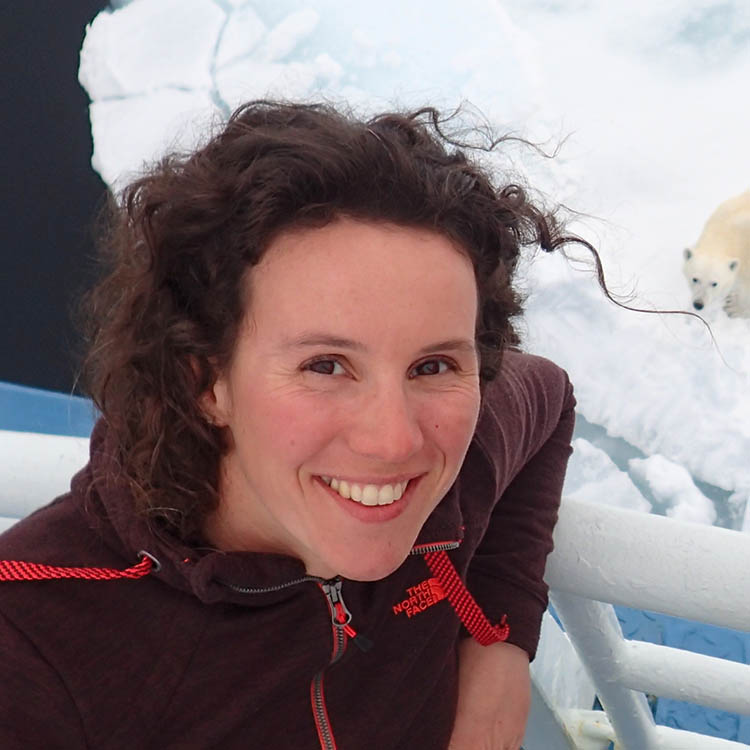MUSIC MEETS SCIENCE
Science extrapolates meaning from the world through observation and experiment. Information deduced from these experiments inform our understanding of the world, but sometimes fail to engage with the aesthetic, with which we experience the world, particularly compared to the affective power of art and music.
“Science states meanings; art expresses them.
”
Dewey famously compared the molecular description of water — two hydrogen atoms combined with one oxygen — with our experience of water as a deep ocean, or a warm shower, or a cleansing drink.
This is not to privilege one domain over another, but rather to highlight the efficacy of science and art in concert. This is at the base of this research.
Professor Mary Finsterer from the Conservatorium of Music, University of Tasmania, has been developing her opera Antarctica collaborating with scientists from the Institute of Marine and Antarctic Studies, University of Tasmania
RESEARCH
Opera ANTARCTICA provides a platform of investigation for how scientific findings can be communicated through artistic expression; and music’s uniquely affective power to reveal science to itself in unexpected forms.
It brings together experts from music, visual arts, digital media, humanities, cultural studies and a multiplicity of fields within science to explore the intersections between disciplines. The process seeks to map out innovative ways of reimagining these fields in relation to the continent of Antarctica.
In July 2019, composer and CALE Creative Fellow, Professor Mary Finsterer, directed Opera Antarctica Symposium: FIRST LIGHT. This two-day forum was co-ordinated in association with Associate Professor Guy Williams and a team of scientists at IMAS. It included interviews, workshops, discussions and presentations by twenty specialists from a multiplicity of fields within science and the arts at the University of Tasmania and further afield in the creative industries.
The research, by way of graphical representation, raw data, audio and visual material and other relevant documentation, that was presented at the symposium has provided a premise for the creation of the libretto and music that constitutes the opera, ANTARCTICA. This research will also form the foundation for an installation which runs parallel to the opera. Entitled CIRCUMPOLAR it will function as a prism which dissects and reflects on the content of the opera including artistic inspiration, scientific data, storytelling & historical perspective.
COLLABORATORS
IMAS - UNIVERSITY OF TASMANIA
The Institute For Marine And Antarctic Studies (IMAS), The College Of Arts, Law And Education (Cale) & Associated Universities
SCIENCE STEERING COMMITTEE
Dr Guy Williams
ARC Future Fellow - Ocean Sea Ice Interactions
Marine & Antarctic Futures Centre (MAFC)
Dr Felicity McCormack
Researcher and Ice Sheet Modeller with Antarctic Gateway Partnership
Centre for Oceans and Cryosphere, IMAS
SCIENCE TEAM
Dr Amelie Meyer
Research Associate for the ARC Centre of Excellence for Climate Extremes
Centre for Oceans and Cryosphere, IMAS
Dr Kerrie Swadling
Research Fellow and Plankton-Biologist
Centre for Ecology and Biodiversity, IMAS
Dr Vanessa Lucieer
Deputy Head- Ecology and Biodiversity
Senior Research Scientist & Lecturer, IMAS
Dr Jacqueline Halpin
Research Fellow (IMAS) / Adjunct Researcher (CODES & Earth Sciences)
More..
Professor Mark Hindell
Program leader for the Marine and Antarctic Ecosystems Programme
Centre for Ecology And Biodiversity, IMAS
Dr Stuart Corney
Researcher, Antarctic Climate and Ecosystems Cooperative Research Centre (ACE CRC)
Centre for Oceans and Cryosphere, IMAS
ARTS & HUMANITIES
Professor Mary Finsterer
Creative Fellow | College of Arts, Law and Education
University Associate | Institute for Marine and Antarctic Studies
Adjunct | Conservatorium of Music
Assoc. Prof. Elizabeth Leane
English, Humanities and ARC Future Fellow
School of Humanities, CALE & IMAS
CREATIVE PRODUCTION TEAM
Dean Golja
Video / Image Artist
Dean obtained a Masters of Electronic Arts (Multimedia) from the Australian National University which has consolidated Dean’s expertise in digital media for both creative and practical purposes. This has led to photographic & video projects for organisations like the National Museum of Australia, Monash University and Australian Centre for Photography.
Troy Beer
Digital Communications
Troy has worked across a variety of roles and industries in digital communications, video & web production, since graduating from ANU with a degree in Electronic Arts (Multimedia).
He currently works in Strategic Communications for the Wildness Society, managing photography, video, social and digital content.
For more information please contact Professor Mary Finsterer mary@maryfinsterer.com





















